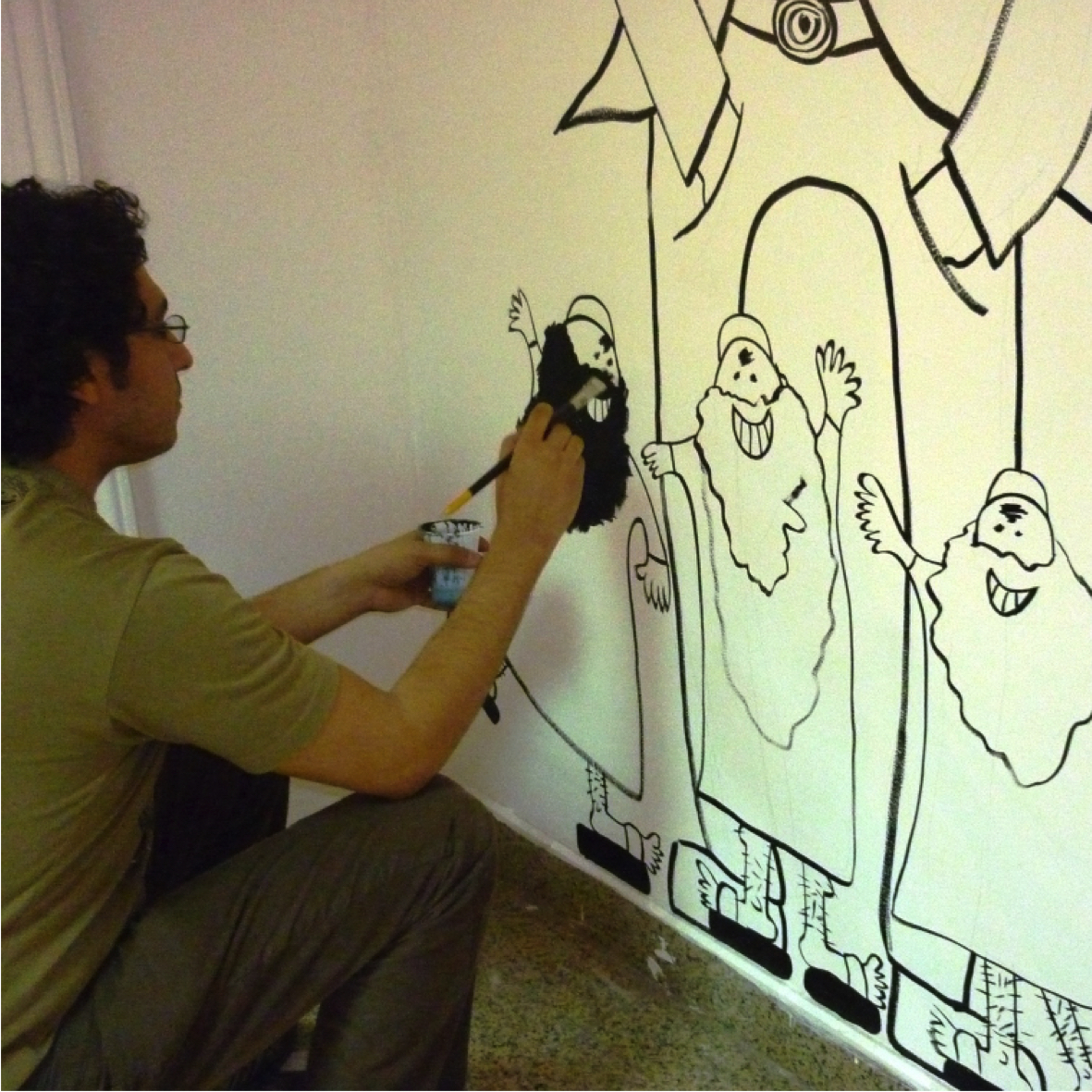‘Cairo is very vibrant now. It’s an amazing place to be an artist’
As a filmmaker without much formal training in visual art, I find that I gravitate more towards paintings, sculptures, and installations that feel accessible, without making you feel that you have to be a part of some elite circle to ‘get it’. While displays of extreme technical ability realistically rendered are impressive, the artworks that tends to move me are most often characterised by the simplistic representation of complex ideas. For me, such pieces have the power to ‘fool’ me into thinking that they’re easy to replicate, while at the same time sending me into a flurry of thoughts.
What first intrigued me about Egyptian artist and independent filmmaker Bassem Yousri’s artwork was exactly this. Through the use of comical figurines and creative characters, Bassem draws you into his pieces, which on the surface appear to have a rather light air about them; however, as you follow his figurines on their journeys – which can span across video, painting, and installation – you realise that something quite profound is actually happening to these seemingly happy, smiling characters.
One of Yousri’s latest installations, It’s Not as Easy as it May Have Seemed to Be, is on exhibit at the Mathaf Arab Museum of Modern Art in Doha, as part of an exhibition entitled Tea with Nefertiti, curated by Sam Bardaouil and Till Felrath. I recently chatted with Bassem in Cairo on the eve of President Morsi’s announcement to protect himself from legislative prosecution in late November, the news of which had barely come out here in Philadelphia, where it was still early in the morning. Hearing him talk about the protests outside Morsi’s palace and in Tahrir Square, it was difficult to speak to Yousri about anything else other than the role of art in revolutionary movements.
Tell me about your installation that’s on view in Doha at the moment – It’s Not as Easy as it May Have Seemed to Be. What was the influence and inspiration behind this piece?
For this installation, I used sculpture only – canvases, frames, and sculptural objects. The canvases are not used as drawing surfaces, and there are no drawings on the wall, as there often are in my other works. This time, I thought I would play the game differently, giving myself this one limitation.
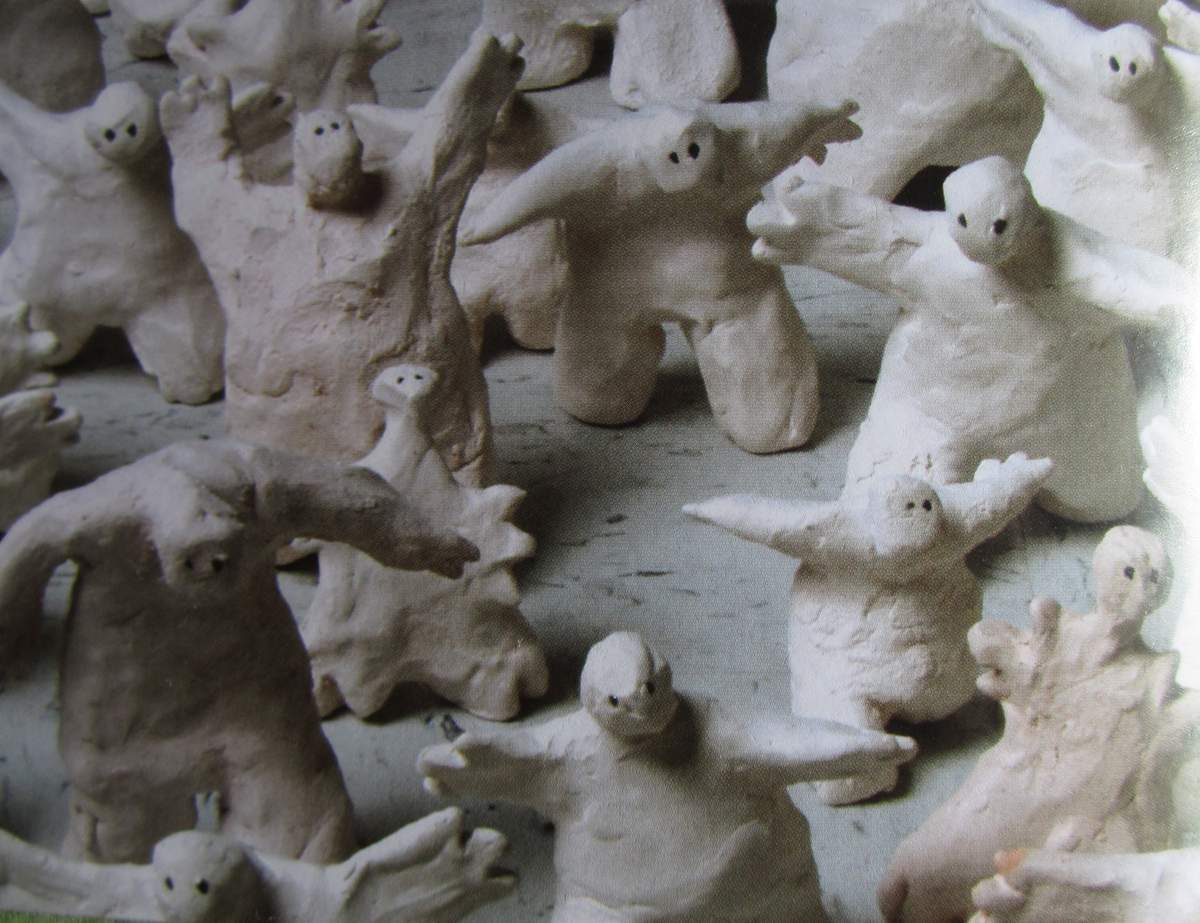
It’s Not as Easy as it May Have Seemed to Be (detail)
The piece is a mini-revolution in the gallery space – a revolution of representation in the context of a museum. There are several wooden frame canvas stretchers randomly arranged on the wall, each one connected to the next by mini stairs. The figurines are inside those stretchers, walking up the stairs from one to the other. There are hundreds of these figurines, and they are all heading through these frames towards this one small wall built out of pedestals, but the wall is broken. The figurines have succeeded in getting past it, and are walking towards a wall with Baroque-style frames arranged in a very symmetrical way. The figurines are then going towards these frames, pulling them down and breaking them.
For this piece, I chose not to use obvious symbols such as drawings of soldiers, for example, amongst the figurines. In addition to the socio-political commentary, the piece addresses issues of representation. I didn’t mean to make a statement such as ‘painting is over’, but rather tried to investigate the possibility of giving new meanings to the objects I use.
It all seems quite self-explanatory, but I’m surprised that I still get people asking me, ‘So, what do you mean by all this?’
So, what does this piece mean, Bassem?
I actually don’t think it’s a good idea to explain too much of one’s idea to an audience. It can be quite limiting to their experience. It becomes very didactic and implodes in itself. People get so caught up in having to understand the work ‘right’. My work is pretty straight forward, I think. It doesn’t need much explanation.
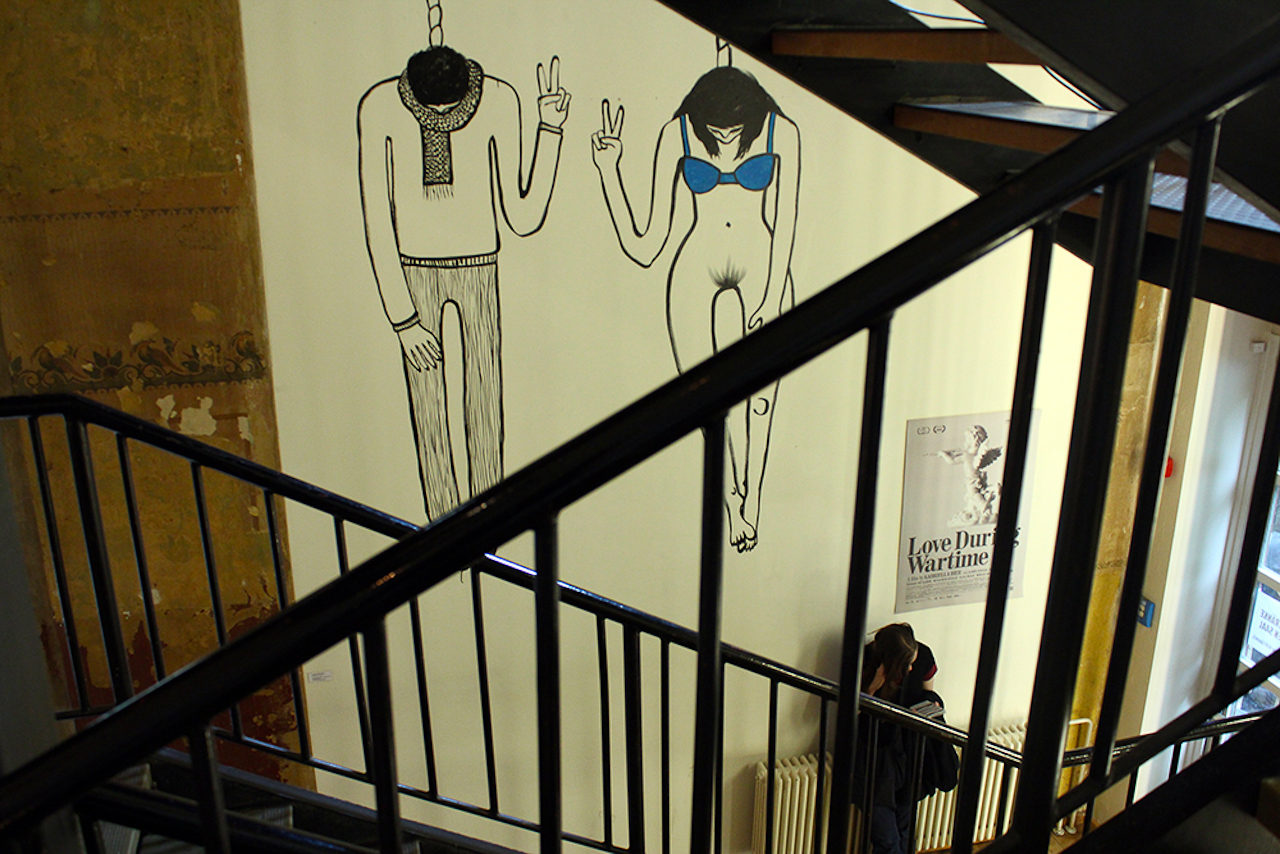
From the Cairo Headlines series (at Berlin’s Voicing Resistance Festival in 2012)
Of course, I’m inspired by the revolution here in Egypt. I’m inspired by my experience of being among millions of people who are all literally moving towards the same goal. To experience how a crowd of that size thinks and moves together has been a life-changing experience for me. Also, this idea of change is really important to me. The revolution is not over – it’s still ongoing in Egypt. There are a lot of barriers that still need to be broken, and boundaries that need to be crossed.
What role do you see art and the artist playing in pushing for social change?
What I’m experiencing in Egypt is proof for me that art is a necessary part of the process. Since the revolution started, everyone’s creative energy has been different than it was before. For example, before the revolution, graffiti did not exist; now, you don’t see a single wall without it. It’s quite inspiring. Honestly, I’m more inspired by the graffiti I see daily on the streets of Cairo than the art I’m seeing in galleries.
I don’t consider Egyptians victims at all. We’re not victims of a natural disaster. We went to the streets knowing we might be killed – it’s different
I imagine that everything you do these days must feel like it has an added weight and importance to it. Are artists conscious of being part of this defining moment in Egyptian history, or are they just carrying on as usual?
I don’t think I can generalise about everyone’s consciousness here, but I can say that some artists definitely are [conscious]. For example, the last couple of group shows I participated in here featured the works of some artists who founded a group called the Young Egyptian Artists Coalition. Since the beginning of the revolution, this group of artists started off creating art in public spaces, as well as involving the community in various neighbourhood art projects. In addition to this type of work, which is a catalyst for social change, they have been working on organising shows in Government-owned galleries that are critical of the sociopolitical situation here in Egypt. It’s important, because for years, any kind of critical art was not allowed in such spaces.
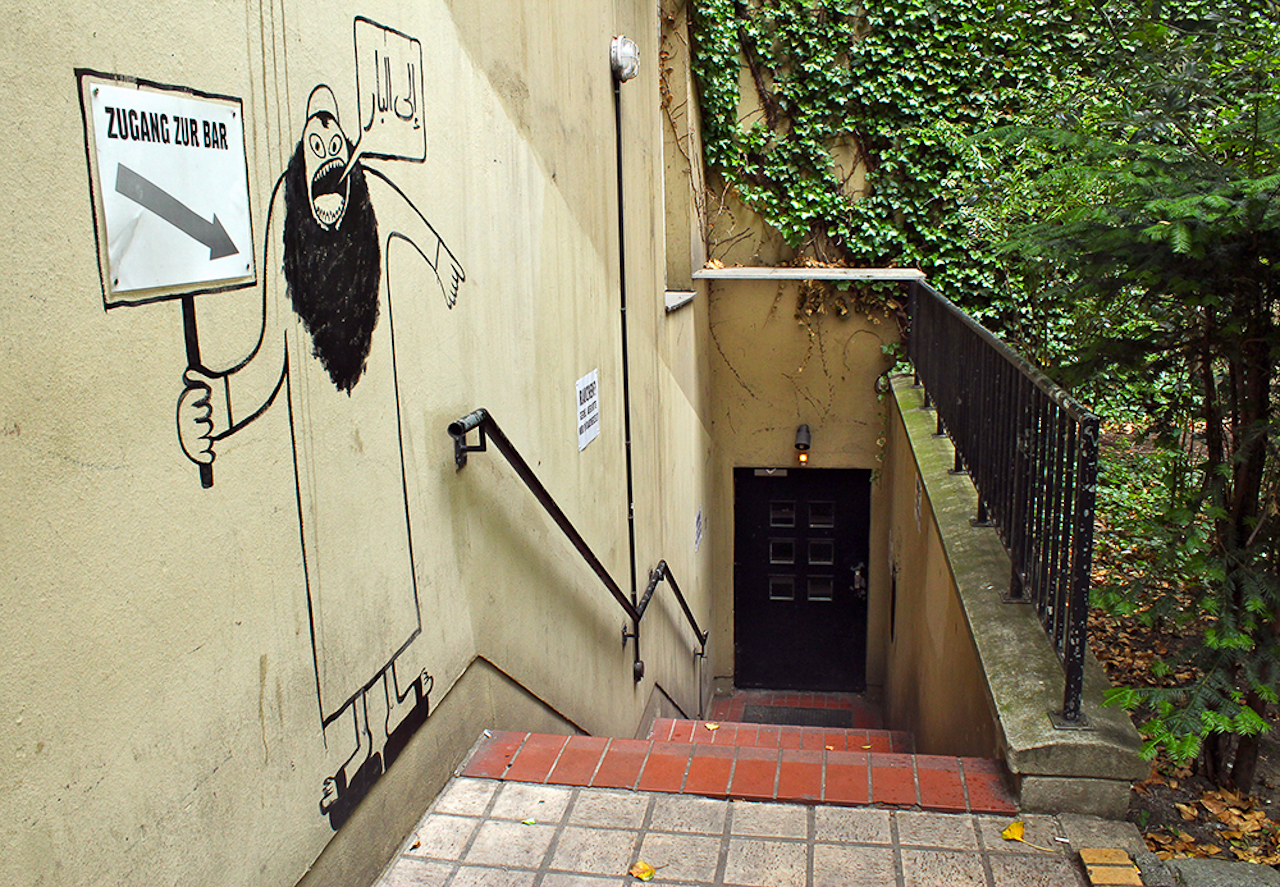
From the Cairo Headlines series (at Berlin’s Voicing Resistance Festival in 2012)
Why are they letting artists like you exhibit their works in these spaces now?
I’m not really part of the organising team, so I can’t really answer that question – but it is a fight. We have to push [the Government] to allow us to show our work. I like the idea of working together as artists to claim our right to have our work shown in Government-owned spaces, and national galleries.
Also, not everyone in the Government is reactionary and corrupt. There are actually many people within who support the revolution and want to implement change. They just don’t know how to make the change happen. Now, with pressure from outside, we can seize what belongs to us.
I used to be quite pessimistic before the revolution; you can see this in my earlier work. The character Mr. Mokhtar in my installation, All the Important Issues tries to talk about change, but fails to make a clear point. As well, he always lectures about very banal subject matters. This is how I felt before the revolution. It’s how I felt about my life in general – I felt I couldn’t change anything, and the sarcasm in my art was a way of overcoming that feeling. In a way, I predicted the clash between the conservatives and secularists in that piece. I didn’t think there would be any change without this kind of confrontation, but I [also] didn’t expect a revolution to happen back at that time.
The difference now is that I feel whatever I do – no matter how small – and any action I take actually matters. I don’t feel like my ideas or actions are in vain anymore. I think many other artists feel this way, too; not just formally-trained artists, but all kinds of people like those doing the amazing graffiti art I mentioned. [Cairo] is very vibrant now. It’s an amazing place to be as an artist. I feel inspired every day.
Being an Egyptian artist during this dynamic period, I’m assuming that when you do exhibitions outside of Egypt – like the residency you did last year in the US – people turn you into a kind of spokesperson for your country and revolution. How do you negotiate that dynamic?
I can never claim that I represent the revolution, or Egyptian artists and youth. I only represent myself and my personal opinion, and deal with situations as they come, but to answer your question, yes - this happens all the time. People consider me a representative of revolutionary art in Egypt. When I’m invited to do a show or residency outside of Egypt, what I have to say there is the same as what I have to say here – my message doesn’t change. But, I always try to be aware of the context in which I display my work, and adapt it to different audiences in order to have a proper conversation.
I care about how cultures see one another, how they clash with one another, and the possibility of having a proper conversation with someone without the barrier of language (metaphorically speaking). I don’t categorise myself as an Egyptian artist, or a Middle Eastern artist. I consider myself an artist. My art is a way of sharing my thoughts by making them visual - I’m just trying to have a conversation with you.
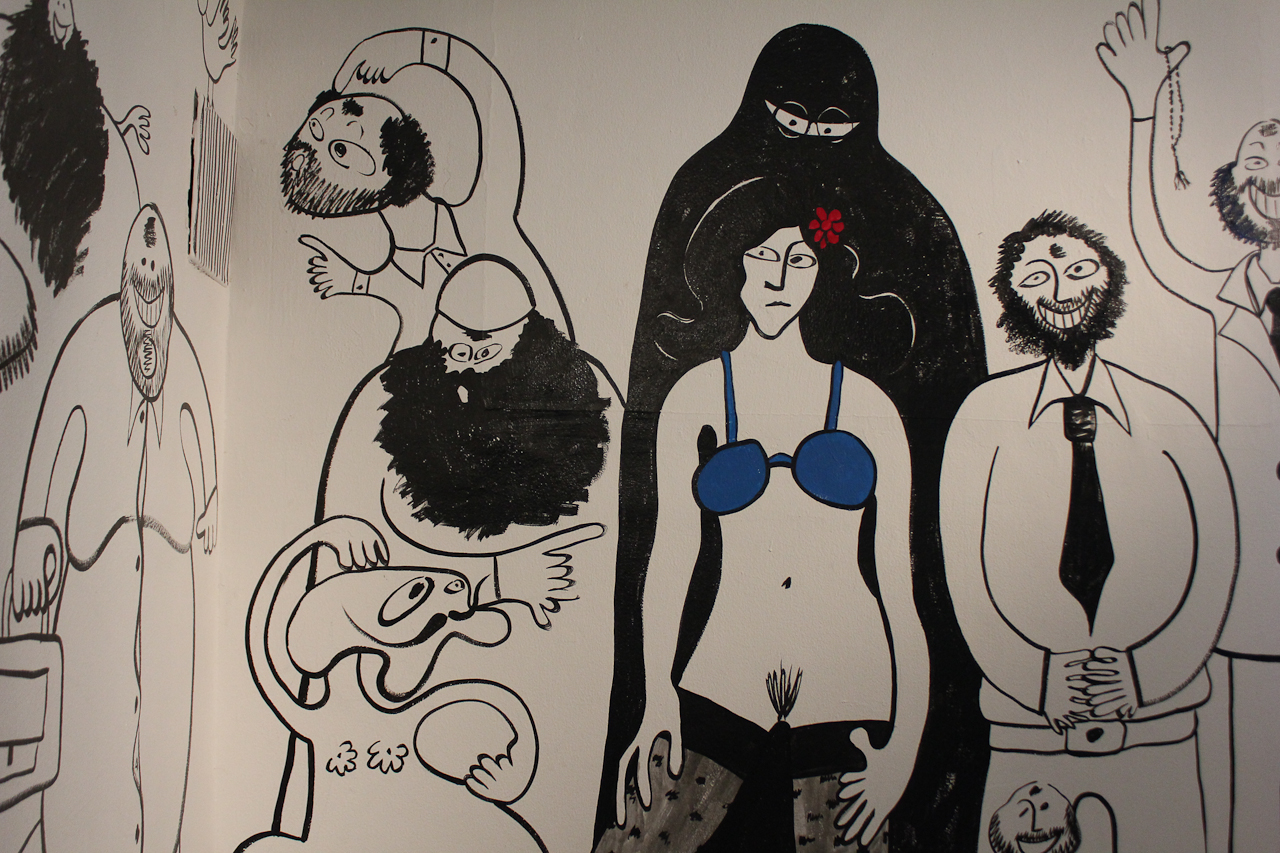
Parliament of the Revolution
Being labeled as a Middle Eastern or Egyptian Artist is something I’ve had to deal with ever since my experience living, studying, and working in the United States. I know who I am and I know what I stand for, but sometimes it’s easier for the ‘system’ to label everybody for marketing reasons. So, if I am described as an Egyptian artist or a Middle Eastern artist, let it be; but I don’t consider that an accurate description of who I am or what I do - it is merely a description of geographical significance.
I never veer from conversations about what’s happening in Egypt, though. If people are curious to know, I’m often generous with my answers. What bothers me is when I attend talks abroad where Egyptian activists or artist talk about their experiences in the revolution, victimising themselves and talking on behalf of the Egyptian youth. I don’t consider Egyptians victims at all. We’re not victims of a natural disaster. We went to the streets knowing we might be killed – it’s different. And, to speak in the name of other artists is problematic. I can only talk about my experiences, not others’. It bothers me when people go to other countries and talk about their experience as if it’s the experience.
